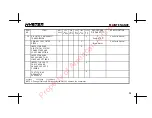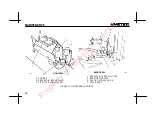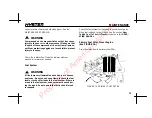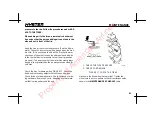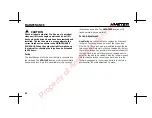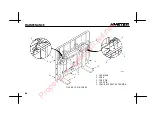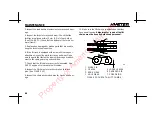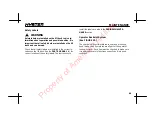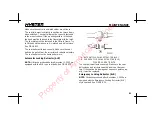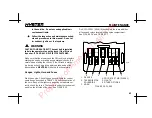
MAINTENANCE
86
riage bar. Raise the carriage to move the lower hook
through the fork removal notch. Slide the fork on the car-
riage so that both upper and lower hooks engage the car-
riage. Engage the lock pin with a notch in the upper car-
riage bar.
Pin Fork (Removal)
. Lower the carriage and put blocks
under a pin fork. When the weight of the forks have been
removed from the fork pin, remove the load backrest ex-
tension. The load backrest extension holds the fork pin in
the carriage. Slide the fork pin from its mount in the car-
riage and through the eye of the fork. See FIGURE 19.
Use a lifting device to lift the fork away from the carriage.
Pin Fork (Installation)
. Install the fork pin in the carriage.
Align the eyes of the forks so that the forks will be installed
on the fork pin. When the fork pin is installed in the car-
riage so that it holds the forks, install the load backrest
extension. Engage the fork with the lock pin.
Inspection of Forks, Mast and Lift Chains
(See FIGURE 21. and FIGURE 22.)
WARNING
Never work under a raised carriage or forks. Lower the
carriage or use blocks and chains on the mast weld-
ments and carriage so that they can not move. Make
sure the moving parts are attached to a part that does
not move.
Do not try to correct the alignment of the fork tips by
bending the forks or adding shims. Replace damaged
forks.
Never repair damaged forks by heating or welding.
Forks are made of special steel using special proce-
dures. Replace damaged forks.
1. Inspect the welds on the mast and carriage for cracks.
Make sure that the capscrews and nuts are tight.
2. Inspect the channels for wear in the areas where the
rollers travel. Inspect the rollers for wear or damage.
Property of American Airlines


